How a Tenant Revolt Sank NYCHA’s Biggest Overhaul Plan in Years
With a week left in the legislative session, New York lawmakers shelved a plan that aimed to revamp 25,000 NYCHA apartments.
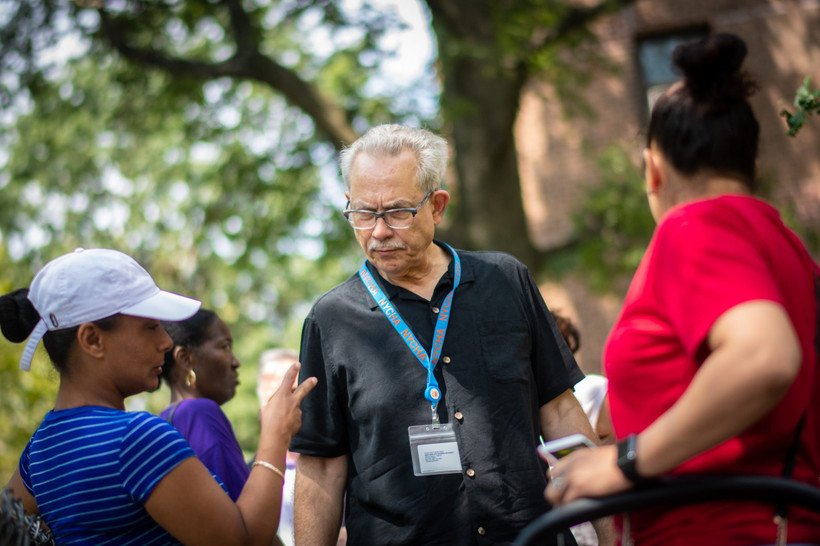
This story was published in partnership with Gotham Gazette.
On May 21, with just ten working days to go in this year’s session, New York lawmakers added a major item to their docket: a bill that would overhaul how the New York City Housing Authority (NYCHA) operates tens of thousands of its public housing units, aimed at securing federal funds and private capital to tackle the authority’s $40 billion backlog of repairs.
Then, just weeks later, they shelved it. On Wednesday, State Senator Brian Kavanagh and Assemblymember Steven Cymbrowitz, chairs of the Senate and Assembly Housing Committees, said in a joint statement that they would not be advancing the plan this session.
“We have decided that further conversation, outreach, and negotiation are necessary before advancing legislation on this topic,” Kavanagh and Cymbrowitz said. “For this reason, we will hold the bill in committee for the remainder of the current legislative session…we look forward to continuing to discuss how best to meet the needs of public housing residents in the months ahead.”
The announcement puts in jeopardy NYCHA’s biggest revamp plan in years.
Dubbed the Blueprint for Change, the plan seeks to reform how NYCHA manages repairs and construction, and, crucially, how it funds them. The plan’s main appeal, NYCHA says, is that it would allow the agency to raise more money — up to six times its current federal allocation — to pay for long overdue repairs. It would also put a new entity, the Public Housing Preservation Trust, in charge of those repairs: remediating lead and mold, fixing boilers, elevators, and stoves, and generally bringing apartments up to standard.
In the lead-up to the bill’s introduction, NYCHA sought to convince lawmakers of its urgency.
“Waiting is not an option for us,” NYCHA Chair and CEO Greg Russ told New York Focus in late May. “We’ve spent 25 years waiting on Congress…We have to act now.”
In the wake of the housing chairs’ announcement, a NYCHA spokesperson told New York Focus that the authority would work with legislators to pass the Blueprint in next year’s session. “We remain committed to Blueprint for Change, which we will further refine as we continue to engage with residents and other stakeholders,” the spokesperson said.
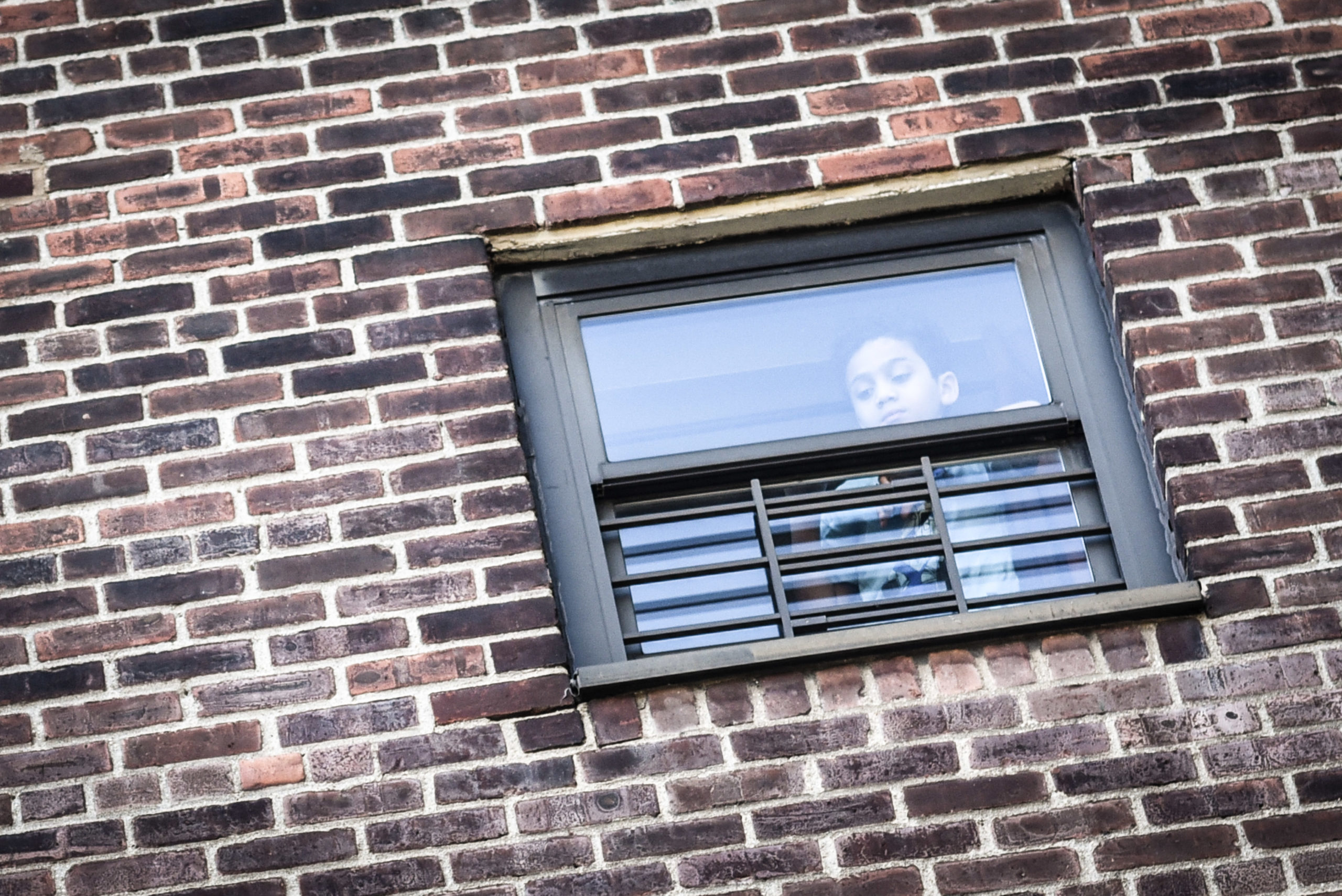 A young resident looks on as Mayor de Blasio attends the ribbon-cutting and deliver remarks at the Marcy Houses Community Center in Brooklyn on Friday, November 6, 2020. Michael Appleton/Mayoral Photography Office
A young resident looks on as Mayor de Blasio attends the ribbon-cutting and deliver remarks at the Marcy Houses Community Center in Brooklyn on Friday, November 6, 2020. Michael Appleton/Mayoral Photography OfficeMany lawmakers, however, have been wary of Russ’ approach since the beginning, as it relies on transferring NYCHA apartments from Section 9 — traditional public housing — to the voucher program known as Section 8.
“I think, in essence, it would end public housing as we know it,” said Assemblymember Yuh-Line Niou, whose district covers more than a dozen NYCHA developments in the Lower East Side and Chinatown. “It’s a huge risk.”
Her concerns echo those of a vocal group of NYCHA tenant organizers, who see the Blueprint as too close to a scheme that has transferred thousands of units to private management, and fear the plan could further erode a rare bastion of truly affordable rents.
In recent weeks, NYCHA sought to accommodate some of their concerns, negotiating with lawmakers to strengthen tenant protections and significantly reduce the plan’s scope from the initial version introduced last year — scaling it down from 110,000 to 25,000 units.
Longtime advocacy groups, including the Community Service Society and Legal Aid Society, embraced the plan, and early half of New York City’s State Senate delegation, including progressives such as Gustavo Rivera and Julia Salazar, co-sponsored the revised bill. As recently as May 25, Kavanagh, the bill’s lead sponsor, told New York Focus the legislation offered a “promising approach” to redressing NYCHA’s woes but indicated it was a work in progress.
An Alternative to Privatization?
With the legislature’s about-face, the Blueprint joins a string of faltering plans to raise much-needed cash for NYCHA under Mayor Bill de Blasio.
As New York City’s public housing crisis has deepened over the last decade, de Blasio has placed much of the blame for the agency’s decline on long-term federal disinvestment, and turned to the private sector to fill in the gaps. In 2015, de Blasio introduced NextGeneration NYCHA, which included plans to raise money for repairs by building private developments on “underutilized” NYCHA land and shifted a few thousand units to private management. In 2018, as the authority faced a federal lawsuit over its failure to clean up lead and mold, came NYCHA 2.0, which aggressively ramped up the NextGen approach, scheduling 62,000 units to be transferred to private management under the federal program known as Rental Assistance Demonstration (RAD). Both of these plans, which include different versions of privatization, have faced stiff opposition from tenants.
The Blueprint would not reverse those earlier programs, but seeks to address NYCHA’s more than 100,000 remaining units. It is the brainchild of Russ, who took the agency’s helm in 2019 after leading the public housing authorities in Cambridge, Massachusetts and Minneapolis, where he oversaw thousands of RAD conversions. NYCHA announced the Blueprint in late July 2020, as New York was emerging from the brutal first wave of the Covid-19 pandemic.
At its core, the plan seeks to do what every other NYCHA plan has sought, and so far failed, to do: raise enough money to close the agency’s enormous repair backlog. NYCHA estimates that this would cost between $18 and $25 billion for all 110,000 non-RAD units, out of a total backlog of around $40 billion and growing.
What’s new about the Blueprint is how it seeks to raise that money: by declaring the tens of thousands of units “obsolete” in order to obtain a special kind of HUD funding, known as Tenant Protection Vouchers (TPVs), then “pooling” the vouchers and issuing bonds against them, effectively taking out loans to finance construction. NYCHA says this would allow it to fund $6 worth of repairs with every dollar it gets from the federal government.
“It’s an ingenious use of an existing HUD program,” said Victor Bach, a senior housing policy analyst at the Community Service Society (CSS).
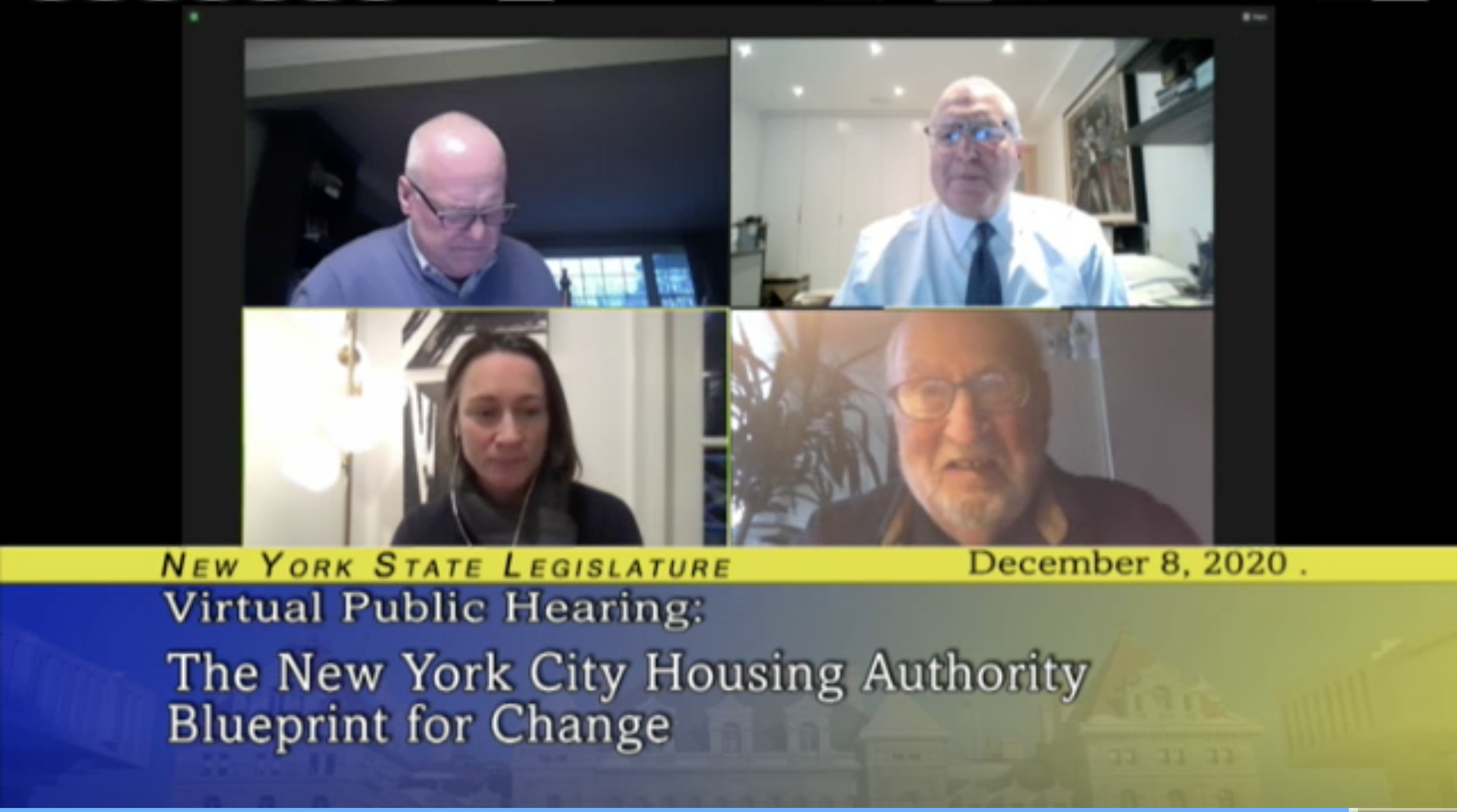 Housing policy analyst Victor Bach, bottom right, speaks at a December 8 Assembly hearing on the Blueprint plan. Screenshot/New York State Assembly Livestream
Housing policy analyst Victor Bach, bottom right, speaks at a December 8 Assembly hearing on the Blueprint plan. Screenshot/New York State Assembly LivestreamBach, who joined CSS in 1983 and leads an annual survey of NYCHA residents, said the Blueprint is the first NYCHA plan in recent memory “that really addresses the full capital deficit that the authority faces.” It would allow NYCHA to upgrade its dilapidated housing stock, he argued, even in the absence of major new federal funding sought by Congressional Democrats as part of President Biden’s infrastructure package.
Bach said he was disappointed that lawmakers had postponed the plan, and that NYCHA should keep the Blueprint up its sleeve given the uncertainties about federal funding.
“So far we haven't heard any other good, alternative ideas, other than Washington coming to the rescue,” he said.
The plan’s opponents, meanwhile, are celebrating.
“I’m glad they have recognized that we will not accept any plan that transfers us out of Section 9,” NYCHA tenant organizer Ramona Ferreyra told New York Focus. She and many other organizers see the Blueprint model as a Faustian bargain that would open NYCHA to backdoor privatization.
“Legally, Section 9 is the only bracket of housing that is public,” Ferreyra said.. “According to Congressional statutes and HUD law…in order for housing to be determined public, it has to be within Section 9.”
“So anytime NYCHA says the Blueprint is public, they are lying,” Ferreyra said.
Ferreyra, who lives in NYCHA’s Mitchel Houses in the South Bronx, has spent so much of the last year organizing against the plan that her day job, running the clothing company Ojala Threads, has become “officially a hobby.” She first heard about the Blueprint last summer, when NYCHA “dumped this information” on tenant leaders in the leadup to the plan’s public announcement. She felt it raised more questions than answers, and joined a newly formed group called Residents to Preserve Public Housing, which had just started hosting weekly Zoom meetings to discuss the plan.
As the group’s network extended citywide, its opposition to the Blueprint grew. Its members, who now number about 40 according to Ferreyra, voted not to negotiate with NYCHA over the plan’s terms but to kill it. In December, seated next to her 89-year-old grandmother, Ferreyra was one of a dozen NYCHA residents who spoke at a state legislative hearing about the plan, all of them in opposition.
The Citywide Council of Presidents (CCOP), the elected group representing NYCHA tenant leaders across the five boroughs, is also seeking to stop the Blueprint.
“We are vehemently opposed to it,” said CCOP senior member Reginald H. Bowman, who serves as the group’s legislative liaison as well as president of the Seth Low Houses in Brownsville.
“They’re trying to ram this through, because they have the resources behind them and the support of some of the political establishment,” he told New York Focus. “They’re not listening to the legitimate resident government.”
Some tenant association leaders, meanwhile, lent the plan their support — with caveats.
“We’re living day to day not knowing if we’re going to have hot water, or any water at all,” Claudia Coger, Resident Association President at Astoria Houses, told New York Focus. “We don’t deserve that. We still pay 30 percent of our income on rent.”
“I’m not saying that it’s the best plan, but with the conditions we are sitting in now...we need some immediate action,” said Coger, who has lived in Astoria Houses for 68 years and also serves on the CCOP board, representing Queens.
“What happens if the buildings go into default?”
Advocates like Bach reject the idea that the Blueprint would privatize the units. Rather, he sees it as a “public alternative to RAD,” and says he would prefer to see the units currently in the RAD pipeline go through the Trust model. While he doesn’t support the idea of transferring the units from Section 9 to Section 8 in principle, he thinks that the difference in practice would be “nominal.”
Cea Weaver, campaign coordinator at Housing Justice for All, an advocacy coalition, largely shares this interpretation, if not Bach’s enthusiasm for the plan as a whole.
“I don’t believe that it’s privatization. I do believe that it’s financialization,” Weaver told New York Focus. Taken in context of the agency’s earlier, privatization-heavy fundraising plans under de Blasio, “the plan is a clear response to residents’ concerns.”
The revised bill includes a long list of tenant protections to make them “consistent with those afforded to a public housing resident,” according to the text. They include keeping rents at 30 percent of income; ensuring that any tenant required to move out for repairs has a right to return; guaranteeing tenants a right to organize; and maintaining succession rights for family members.
“It’s hugely, hugely improved from some earlier attempts to bring some money into the much-beleaguered agency,” Weaver said. “That being said, there are still some key things about it that are really concerning.”
Above all, Weaver highlights the plan’s reliance on debt and what she describes as inadequate protections in the event that the Trust were to default on a loan.
“The bonds are backed by rents, and the rents don’t cover the costs of operating the building,” she said. “What happens if the buildings go into default?”
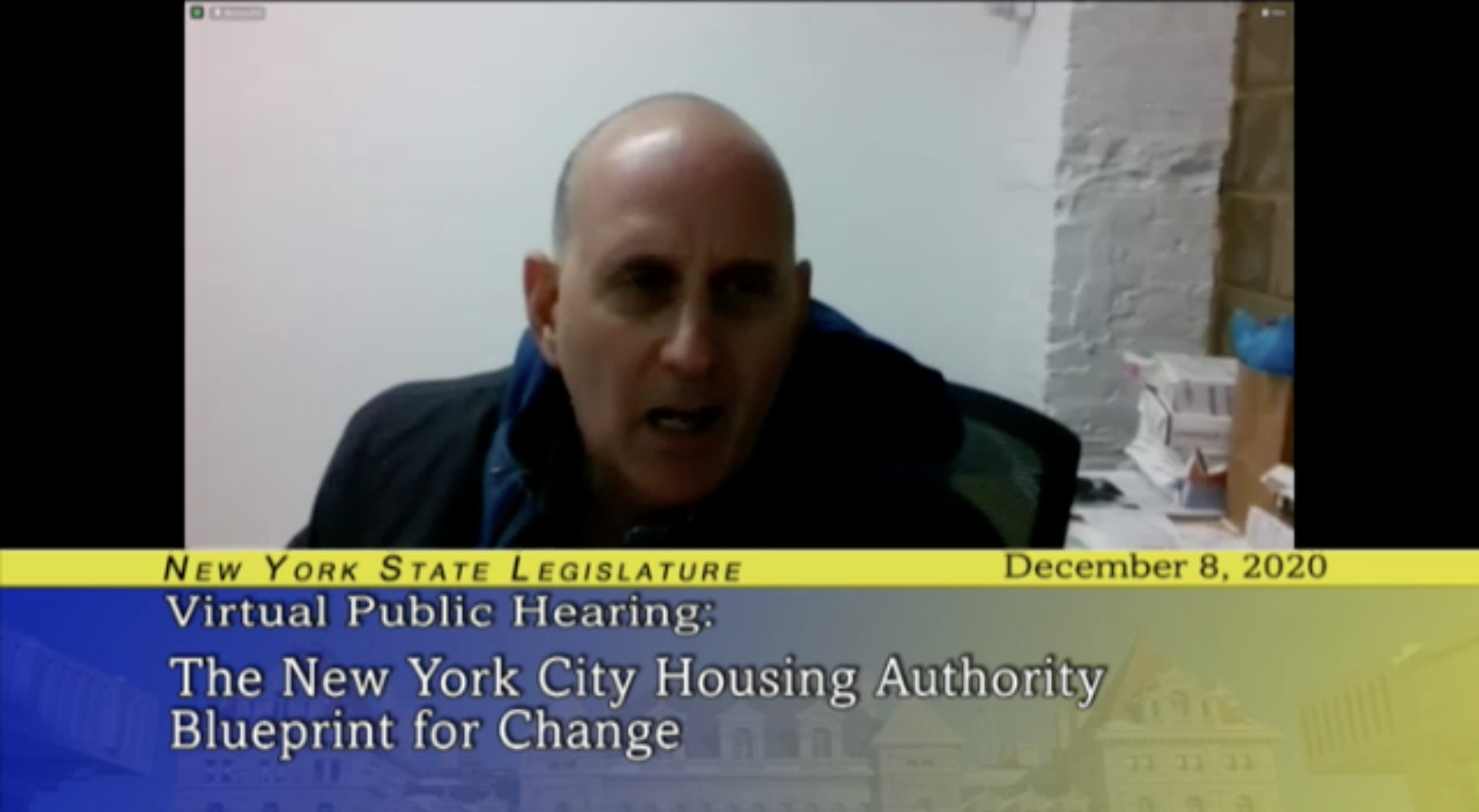 Assemblymember Harvey Epstein speaks at a December 8 hearing on the Blueprint plan. Screenshot/New York State Assembly Livestream
Assemblymember Harvey Epstein speaks at a December 8 hearing on the Blueprint plan. Screenshot/New York State Assembly LivestreamEven if the buildings stay solvent, some lawmakers worry that NYCHA could wind up spending a large share of its funding to service debts. Assemblymember Harvey Epstein compares the proposed Preservation Trust to the MTA, which according to the state comptroller has spent 16 cents on every dollar over the past decade servicing its debts — a share that could reach 23 cents by 2023.
“You know who gets a lot of money off people who borrow money? It’s these large private equity companies and large venture capitalists,” said Epstein, who represents fifteen NYCHA developments in Alphabet City and the Lower East Side.
NYCHA chair Russ is confident that the agency has planned its borrowing to match its income.
“We’ve been very careful in estimating our leverage, and also how much money we think we can access if we move to the Tenant Protection Voucher model,” Russ told New York Focus.
Russ says the revised Blueprint bill includes provisions that would allow the state or city to intervene if there is a debt issue, and he sees little risk that lenders would seek to take over NYCHA property in the event of a default, citing a “tiered set” of legal protections.
“Investors are more likely to want us to give them a financing plan as opposed to taking the property, because they still want to make their return,” Russ said.
For Weaver, such financing plans are precisely where the danger comes in. NYCHA owns a huge amount of valuable land, she said, and even if bondholders aren’t interested in taking over the buildings, the debt could give them inordinate power over how to manage them.
“When a bond goes into default, the bondholder can renegotiate all the terms of everything related to the asset, which is what’s happening in Puerto Rico,” Weaver said. “If bondholders are in a position to take all of those tenant protections that are written into the land lease and just completely renegotiate them… I’d be worried that those protections are not going to last.”
Kavanagh stressed that “there’s nothing about this law that can be changed by a bondholder,” but said he was open to further strengthening the bill text.
One legislator, who asked not to be named, said that the bill’s proponents were considering a revision to ensure that in the event of default, New York City would be responsible for repaying NYCHA’s debt — removing any possibility of private bondholders rewriting terms.
Federal Funds
With the Blueprint shelved, all eyes turn to Congress, where Democrats are seeking a major cash infusion for public housing as part of President Joe Biden’s infrastructure package.
In its original outline, Biden’s American Jobs Plan proposes a $40 billion infusion in capital funding for public housing. Senate Majority Leader Chuck Schumer is proposing to double that sum, with the backing of Nydia Velázquez and other New York Congressmembers. Under Schumer’s proposal, about half of the funds would go to NYCHA.
Progressives, led by Senator Bernie Sanders and Congresswoman Alexandria Ocasio-Cortez, are aiming still higher with the Green New Deal for Public Housing, which seeks to fully retrofit and decarbonize the country’s decades-old, highly polluting public housing stock. First introduced in 2019, the bill was reintroduced in April with a funding goal of at least $100 billion.
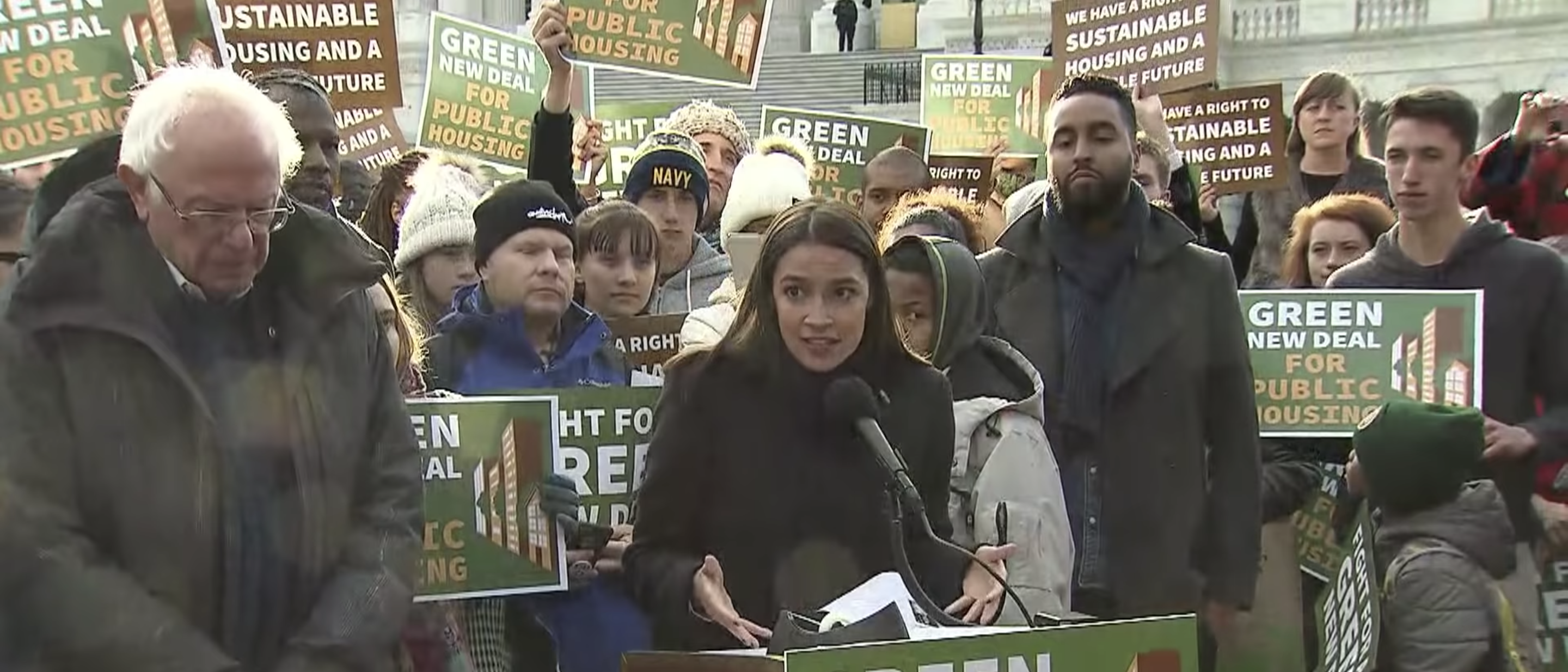 Bernie Sanders and Alexandria Ocasio-Cortez Introduce the Green New Deal for Public Housing. Office of Senator Bernie Sanders
Bernie Sanders and Alexandria Ocasio-Cortez Introduce the Green New Deal for Public Housing. Office of Senator Bernie SandersMany residents opposing the Blueprint say NYCHA should have focused on seeking this kind of direct federal funding all along.
“Why is it that public housing leadership is not next to Chuck Schumer saying ‘Thank god, you’ve found a way to deliver the money within Section 9…How can we work on getting this done as quickly as possible?’” Ferreyra asks.
Russ says NYCHA has been “very supportive” of prospects for additional federal capital.
“It’s the first time in maybe forty years that anybody has really talked about funding, and we’re not going be looking away from that at all,” Russ said. “The model we’re proposing works on its own, and it also either complements or supplements anything we could get from the federal government.”
Among the revisions to this year’s Blueprint bill was language requiring the Trust to “adopt rules or regulations establishing sustainable design guidelines,” including criteria for converting appliances to electric and generating renewable energy, which Russ said made it compatible with a Green New Deal.
NYCHA emphasizes that this would create hundreds of long-term green jobs, along with thousands of shorter-term construction jobs, and that the Trust would be mandated to hire NYCHA residents whenever possible, consistent with federal regulations.
“So Many Promises”
If these promises failed to win over many tenants and lawmakers, it boils down to one fundamental reason: trust.
“At this point, they’ve heard so many promises that were made, most people just don’t believe one way or the other in what is being said,” Assemblymember Latrice Walker told New York Focus. Walker represents Brooklyn’s Brownsville and Ocean Hill neighborhoods, home to a higher concentration of NYCHA residents than almost any other legislative district, and has experienced firsthand the effects of an earlier effort to convert public housing to Section 8.
Walker was a teenager in the late 1990s when NYCHA announced its first-ever demolition plan, targeting Brownsville’s Prospect Plaza Houses, where she lived. The development’s 12- and 15-story buildings were to be torn down and replaced with rowhouses under the Clinton-era HOPE VI program. NYCHA moved tenants out in 2000, with $21 million in HUD funding to begin the demolition.
More than a decade later, the hollowed-out buildings were still standing, while more than 1,000 residents were scattered across the city and beyond. It wasn’t until 2017 that new buildings were completed in their place — with just 80 apartments still in NYCHA’s hands.
“Ultimately I was displaced because of it,” said Walker. “A lot of folks, even though they had a right to return, the right to return was never realized.”
The saga inspired Walker to enter politics, with the goal of defending the rights of tenants like her family and neighbors. Prospect Plaza has remained an exception in NYCHA’s history, as New York, unlike many other cities, has left virtually all of its public housing standing. But it left its scars, and as NYCHA has cycled through a series of private-sector-oriented reform schemes to allay its chronic lack of funding, trust has continued to erode.
“So when I heard about the Blueprint, my spidey senses became awoken,” Walker told New York Focus. She was pleased with some of the changes introduced in the revised bill, but still “not totally sold on the initiative.”
“Until my community is on board with it, then it’s definitely not something that I can support,” she said. “They have to do a lot more groundwork, a lot more outreach to the residents to get buy-in.”
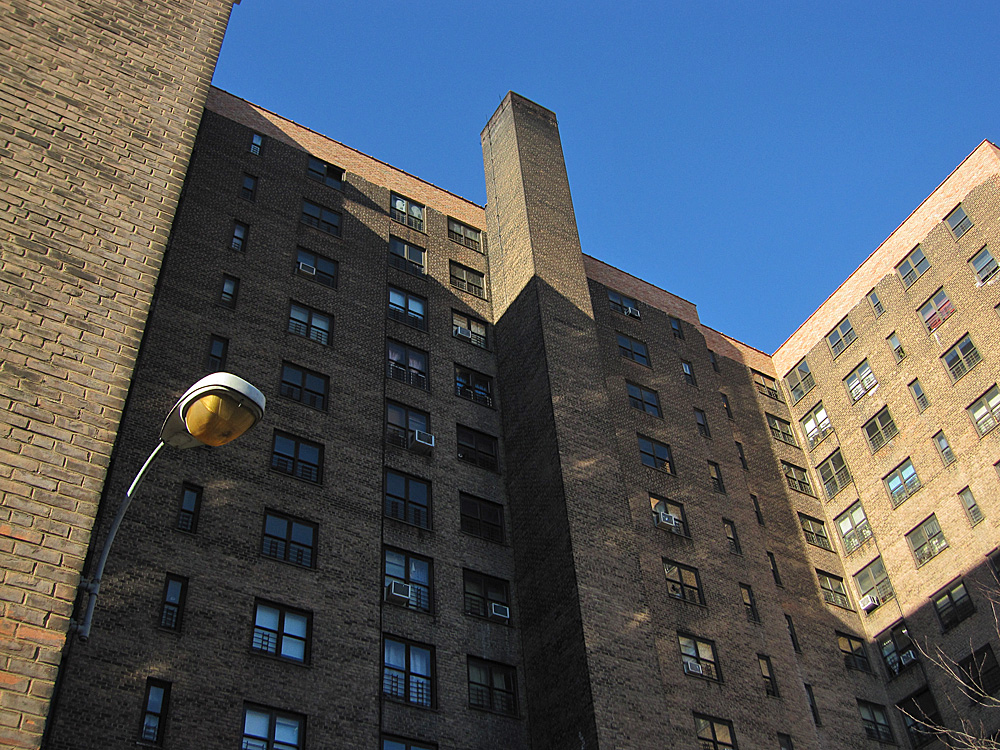 Public housing units in New York City. Flickr
Public housing units in New York City. FlickrBarbara Brancaccio, NYCHA’s communications director, says the agency has already done extensive outreach for the plan.
“We’ve literally touched every household on multiple occasions through endless mailings,” as well as posters, social media, and email blasts, she said. The authority has also hired a consulting firm, NYC Action Lab, to canvass for the plan, at a cost of $250,000.
For Bowman, of CCOP, such outreach is no substitute for long-term collaboration with residents.
“That’s a campaign, that’s not consensus,” he said. “That’s like telling me, ‘Well, I ran $1 million worth of commercials on selling a product, but nobody bought the product.’”
“When The Dust Settles”
Many lawmakers said that with such fierce tenant opposition and so few days left in the legislative calendar, it wasn’t the moment to push the plan through.
“Everyone is in agreement with the fact that to keep doing the same thing and expecting a different outcome is insanity,” Walker said. But she wanted to see more dialogue before moving ahead.
Epstein, too, felt there had been insufficient resident input and that it would be inappropriate to “rush” the plan through the legislature.
“I guess neither Washington nor the legislature may have the same sense of urgency that we do,” lamented Bach, of CSS. Nevertheless, he hopes that Congressional Democrats will find a way to deliver the $80 billion they’ve promised. If so, “then there may be no need for a Preservation Trust, or it could be a modified program.”
“But if Washington comes short of that, then NYCHA will still have to go the route of conversion through the Trust or through RAD to meet its capital needs,” he continued. “So a lot depends on what happens when the dust settles in Washington.”
Perhaps just as decisive will be this month’s mayoral primary, which both Bach and Weaver worry could tip the scales back towards privatization.
“The outcome could put NYCHA and its residents even more at risk,” Bach said. “Having the Preservation Trust in hand would have made it possible for the Authority to address its entire capital needs regardless of who is elected.”
“I’m scared of the next mayor pursuing RAD at a much more aggressive pace,” Weaver said. The Trust model “is just so much better than that.”
Still, a spirited group of residents is as committed as ever to defeating the plan once and for all — and, in Ferreyra’s words, “end[ing] the political career of anyone supporting the Blueprint.” Residents to Preserve Public Housing is planning a “Day of Rage” against the Blueprint on June 10, and members are circulating a petition to remove Russ as NYCHA chair.
“He came in with this plan, and he thought we weren’t going to notice,” Ferreyra said of Russ. “I don’t think he was expecting this pushback.”



